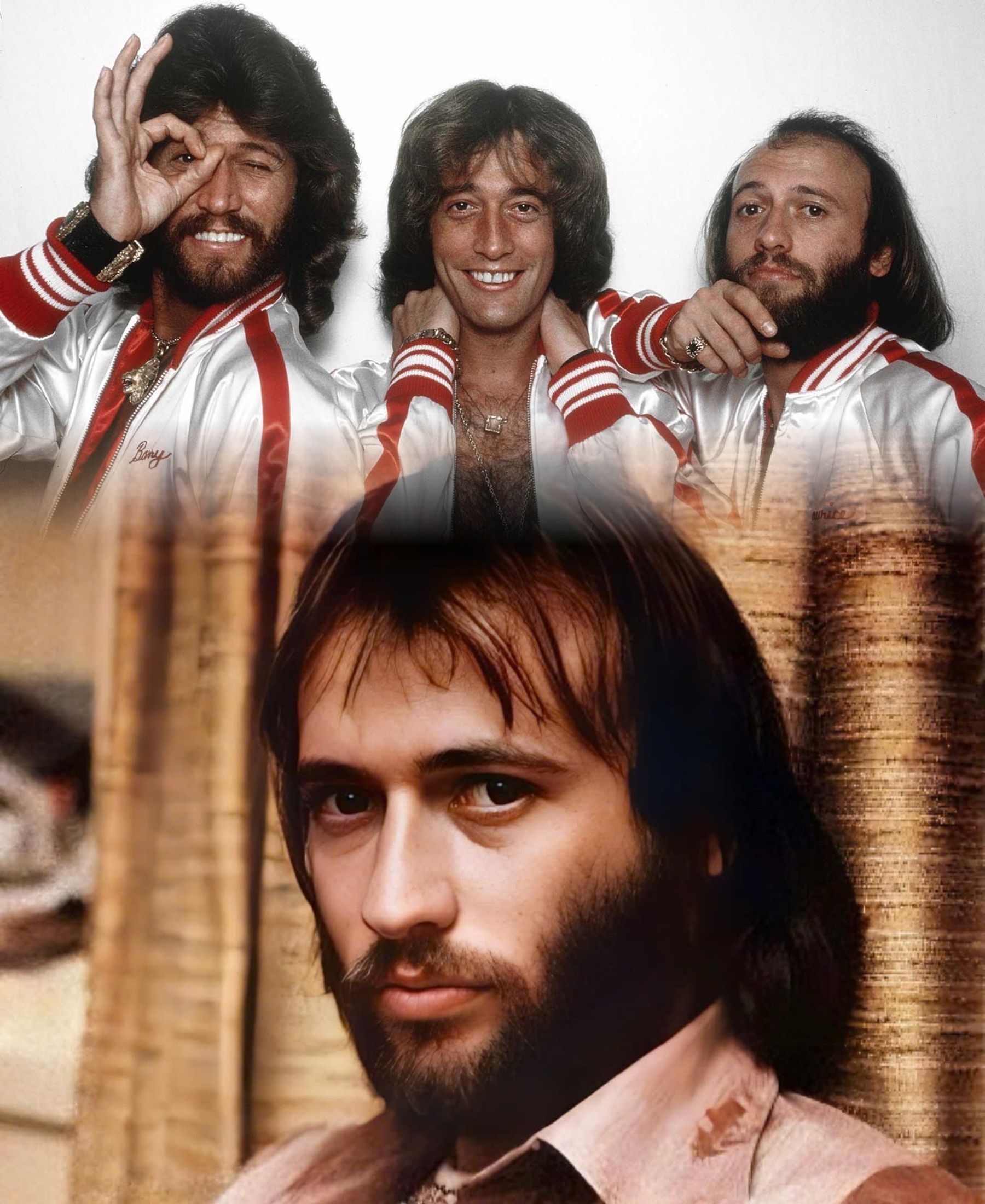
When people think of the Bee Gees, the instantly recognizable sounds that come to mind usually spotlight Barry’s soaring falsetto, Robin’s quivering vibrato, and the shimmering harmonies that captured the spirit of an era. However, lurking quietly behind these iconic voices was a silent powerhouse, the true architect of the Bee Gees’ unique sound: Maurice Gibb.
Born in 1949 on the Isle of Man, Maurice was the middle brother in the legendary Gibb trio. Though his name rarely graced headlines or billboards, his musical influence within the group was profound and pivotal. To grasp the magnitude of the Bee Gees’ extraordinary success—a triumph etched deep in pop culture history—you must first understand Maurice’s central role as the band’s musical cornerstone.
Often hailed as the “glue” that fused the Bee Gees together, Maurice was an extraordinary multi-instrumentalist. While primarily known for his skills on the bass and keyboard, his versatility extended to guitar, piano, organ, and synthesizers. This remarkable adaptability allowed him to sculpt the textural layers and rhythmic foundations that became hallmarks of the Bee Gees’ sound, giving their music a rich, signature depth.
In the formative pop years of the 1960s, Maurice’s musicianship helped the group craft lush, Beatlesque arrangements, setting the Bee Gees apart from their peers. But the real metamorphosis came in the 1970s disco era. Maurice’s command of bass and keyboards was crucial to the band’s reinvention. Iconic tracks such as “Stayin’ Alive,” “Night Fever,” and “How Deep Is Your Love” throbbed with rhythmic grooves and atmospheric layers—each beat and texture painstakingly crafted through Maurice’s expertise just as much as through his brothers’ unforgettable melodies.
The Bee Gees’ signature sound was also built upon their impeccable vocal harmonies, with Maurice providing the indispensable middle voice that elegantly balanced Barry’s lead and Robin’s emotional vibrato. His gifted ability to intertwine complex harmonies often went unnoticed by casual listeners but was an essential ingredient in creating the lush, multi-layered soundscape that made their hits timeless.
Maurice was a vocal chameleon—capable of leading when called upon but above all a harmony savant whose instinct for blending voices injected life into the trio’s legendary harmonies. Music aficionados may find it difficult to isolate Maurice’s vocal inputs, yet the absence of his contributions would render the Bee Gees’ sound incomplete.
Beyond performance, Maurice possessed an intuitive ear for production and arrangements. He played a vital role in shaping the entire sonic identity of the Bee Gees’ studio albums. His knack for texture and layering was pivotal in elevating their music, enabling seamless transitions across genres—from folk-inspired ballads to the quintessential disco beats that defined the 1970s music scene.
Bandmates and collaborators alike lauded Maurice for his uncanny ability to sense exactly what a track needed—whether it was a delicate instrumental touch, a shift in dynamics, or the wisdom to know when to step back and let the music breathe.
Outside of music, Maurice’s personality was a stabilizing force within the band’s dynamic. With Barry and Robin’s frequent creative and personal clashes, Maurice’s role as the mediator often saved the group from internal strife. His capacity to cool tensions with humor and empathy was as vital to the Bee Gees’ survival as his musicianship. Many believe the group’s longevity hinged on Maurice’s peacemaking presence.
Though Maurice sometimes pursued solo projects and collaborations beyond the Bee Gees, he shunned the spotlight, content to anchor the group’s vision from the background. His death in 2003 left not only his family but the music world grieving a profound loss. His brothers acknowledged that continuing without Maurice was challenging—he was more than part of the band’s sound; he was its foundation.
Maurice Gibb might never have been the public face of the Bee Gees, but he undeniably was its backbone. His talents as a multi-instrumentalist, arranger, and harmony virtuoso shaped a sound that millions cherished, even if they never realized his hand in crafting it. His legacy transcends notes and chords—he was the quiet architect whose genius transformed three brothers’ voices into one of music history’s most unforgettable and iconic sounds.
In the grand narrative of the Bee Gees’ story, Maurice Gibb remains a poignant reminder that sometimes the most essential roles in history are filled not under the blazing spotlight, but just behind it—quietly, steadfastly, and with unmatched brilliance.
